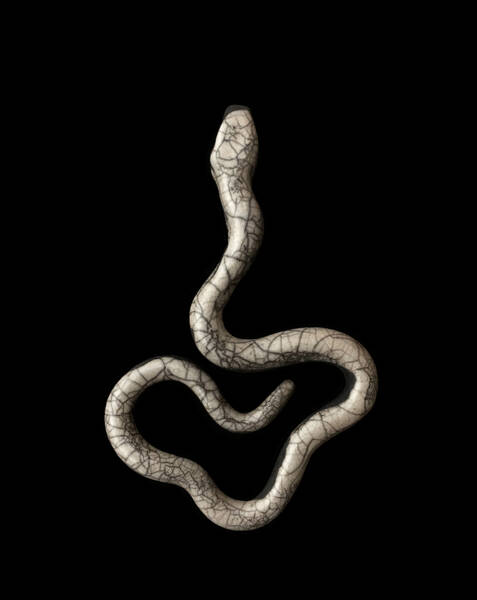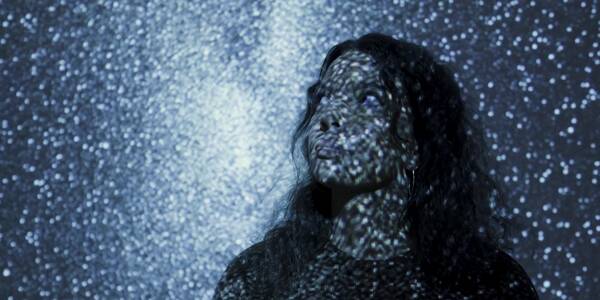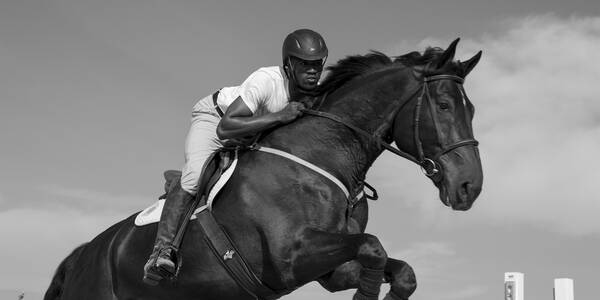profile / alumni / photography-and-imaging / diversity / spring-2021
March 18, 2021
By Solvej Schou
Images courtesy of Myriam Negre
Photography alumna Myriam Negre fills her ceramics, photos and video art with spiritual empowerment
Raised in Barcelona and based in the lush forest-filled Montseny Biosphere Reserve outside of the city, Photography and Imaging alumna Myriam Negre creates ceramics, photography and video art with an emphasis on activism, spirituality, women’s empowerment and symbolism.
“My work is focused on the awakening of the sacred feminine in all of us,” she says. “My menstrual cycle is a big player in my creative process. As I’m about to bleed, currents of creativity flow down. Living surrounded by wild nature also helps me. Observing nature teaches us so much about who we really are and what we’re here for.”

My work is focused on the awakening of the sacred feminine in all of us.
Myriam NegrePhotography and Imaging alumna

Steeped in color, Negre’s 2015 photograph Red Path I depicts craggy rocks and a red pool of water that resembles menstrual blood. It was shown at New York’s Unmentionables Film Festival, along with her 2015 short film Red Path, which explores the power of menstruation. In a poem at the beginning of the film, Negre opens up about being adopted and having had leukemia at age 12 also as reasons why she’s embraced the theme of blood.
The film transitions into footage of a woman laying down on a boulder in a forest, as Negre narrates, “She had been long asleep. One day she woke up. Not by the kiss of a prince, who would define her, and give her permission to exist. She woke up by the drumming of her womb.”
For 2019’s Serpent VIII—a ceramic serpent curved into a heart shape—and 2018’s Serpent Vase, featuring a clay serpent wound around a vase, Negre used a Japanese raku technique. She removed the pieces from a red-hot kiln and cooled them rapidly. That caused black smoky cracks to appear in the white glaze. “There’s surrender and trust in this raku process,” she says. “Serpents are very present in my ceramic work. They represent the wisdom within, and teach us about life cycles through the shedding of skin.”
Negre’s different mediums of creative expression all have one thing in common. “They’re creativity at play with a purpose,” she says. “They open up the mind and heart of the viewer.”
Growing up by the Balearic Sea, which flanks Barcelona, Negre’s love of art and nature began early. Inspired by her mother, an amateur painter, and her father, who would photograph flowers and family with his 35 mm Nikon camera, she started taking photos when she was 7 years old. “Since then, I knew my life would be related to the visual arts,” Negre says. She studied graphic design in Barcelona before going to ArtCenter.
“When I arrived at ArtCenter I thought I was in heaven,” she says. “I learned everything I needed to be able to take the images that I had, for years, in my head.” Late photographer and poet Robert Engle, a Photography instructor, was her mentor. “He opened up a whole new way of expressing my feelings through images,” she says.


During the COVID-19 pandemic, Negre has been focusing on new pieces. Her 2020 ceramic sculpture Woman Birthing a New Consciousness, part of the group exhibition Birth is Art at the Espai7 Gallery in Manresa, Spain, was inspired by the pre-Columbian Aztec goddess Tlazoltéotl, the goddess of fertility and childbirth. In Negre’s piece, a serpent is being birthed instead of a child.
“This makes the viewer reflect on what we’ve given birth to so far to get us to where we are now,” says Negre. “This pandemic is the reflection of a lack of willingness to take responsibility for the impact of our actions on the collective. We’re responsible for what we create, and maybe we’ve forgotten how to birth a new collective creation. Hopefully, with compassion and supporting each other, we’ll create new ways for the benefit of all. We have a lot of work to do, and I'm here to be part of this new birth with my work.”









